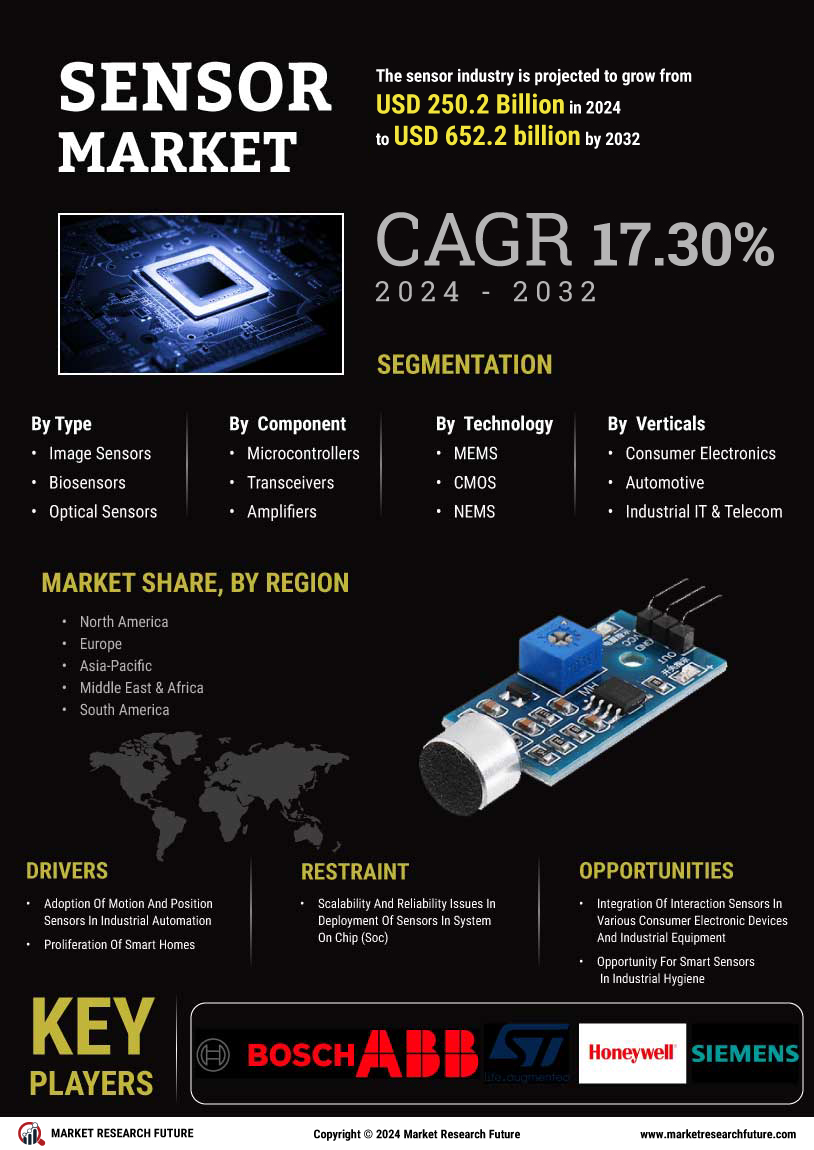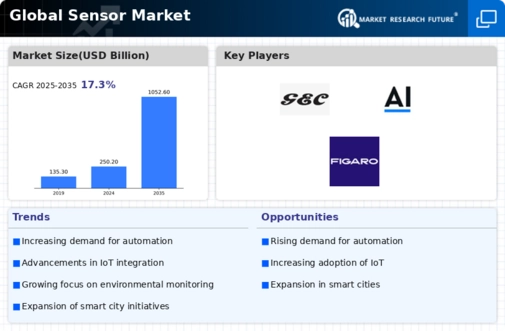Smart City Initiatives
The Global Global Sensor Market Industry is significantly impacted by the proliferation of smart city initiatives worldwide. Urban areas are increasingly leveraging sensor technology to enhance infrastructure, improve public services, and optimize resource management. Sensors are deployed in traffic management systems, waste management, and energy conservation efforts, contributing to more efficient urban living. As cities aim to become smarter and more sustainable, the demand for sensors is expected to rise, supporting the market's growth trajectory. This trend aligns with the broader movement towards urbanization and the need for innovative solutions to address urban challenges.
Healthcare Sector Growth
The Global Global Sensor Market Industry is witnessing substantial growth due to the increasing adoption of sensors in the healthcare sector. Wearable health devices, equipped with advanced sensors, are becoming commonplace, enabling continuous monitoring of vital signs and health metrics. This trend is supported by the rising prevalence of chronic diseases and the need for remote patient monitoring solutions. As the healthcare industry continues to innovate, the demand for sensors is expected to surge, contributing to the overall market growth. The integration of sensors in healthcare applications is likely to enhance patient outcomes and streamline healthcare delivery.
Market Growth Projections
The Global Global Sensor Market Industry is projected to experience robust growth over the next decade. With a compound annual growth rate (CAGR) of 13.95% anticipated from 2025 to 2035, the market is expected to expand significantly. By 2035, the market size is estimated to reach 1052.6 USD Billion, reflecting the increasing adoption of sensor technologies across various sectors. This growth is driven by factors such as technological advancements, rising demand for automation, and the need for enhanced data collection and analysis. The future of the Global Global Sensor Market Industry appears promising, with numerous opportunities for innovation and expansion.
Technological Advancements
The Global Global Sensor Market Industry is experiencing rapid growth driven by technological advancements in sensor technology. Innovations such as miniaturization, improved sensitivity, and enhanced connectivity are enabling sensors to be integrated into a wide array of applications. For instance, the rise of the Internet of Things (IoT) has led to increased demand for smart sensors in various sectors, including healthcare and automotive. As a result, the market is projected to reach 250.2 USD Billion in 2024, reflecting a growing reliance on sophisticated sensor solutions to enhance operational efficiency and data accuracy.
Rising Demand for Automation
The Global Global Sensor Market Industry is significantly influenced by the rising demand for automation across various sectors. Industries such as manufacturing, logistics, and agriculture are increasingly adopting automated systems to enhance productivity and reduce operational costs. Sensors play a crucial role in these automated systems by providing real-time data for monitoring and control. This trend is expected to contribute to the market's growth, with projections indicating a market size of 1052.6 USD Billion by 2035. The integration of sensors in automation processes is likely to streamline operations and improve decision-making capabilities.
Environmental Monitoring Needs
The Global Global Sensor Market Industry is also propelled by the growing need for environmental monitoring. Governments and organizations are increasingly focusing on sustainability and environmental protection, necessitating the use of sensors for monitoring air and water quality, as well as other environmental parameters. For example, sensors are employed in smart cities to track pollution levels and manage resources efficiently. This heightened awareness and regulatory pressure are likely to drive the market forward, as the demand for reliable environmental data continues to rise, supporting the industry's expansion.














Leave a Comment